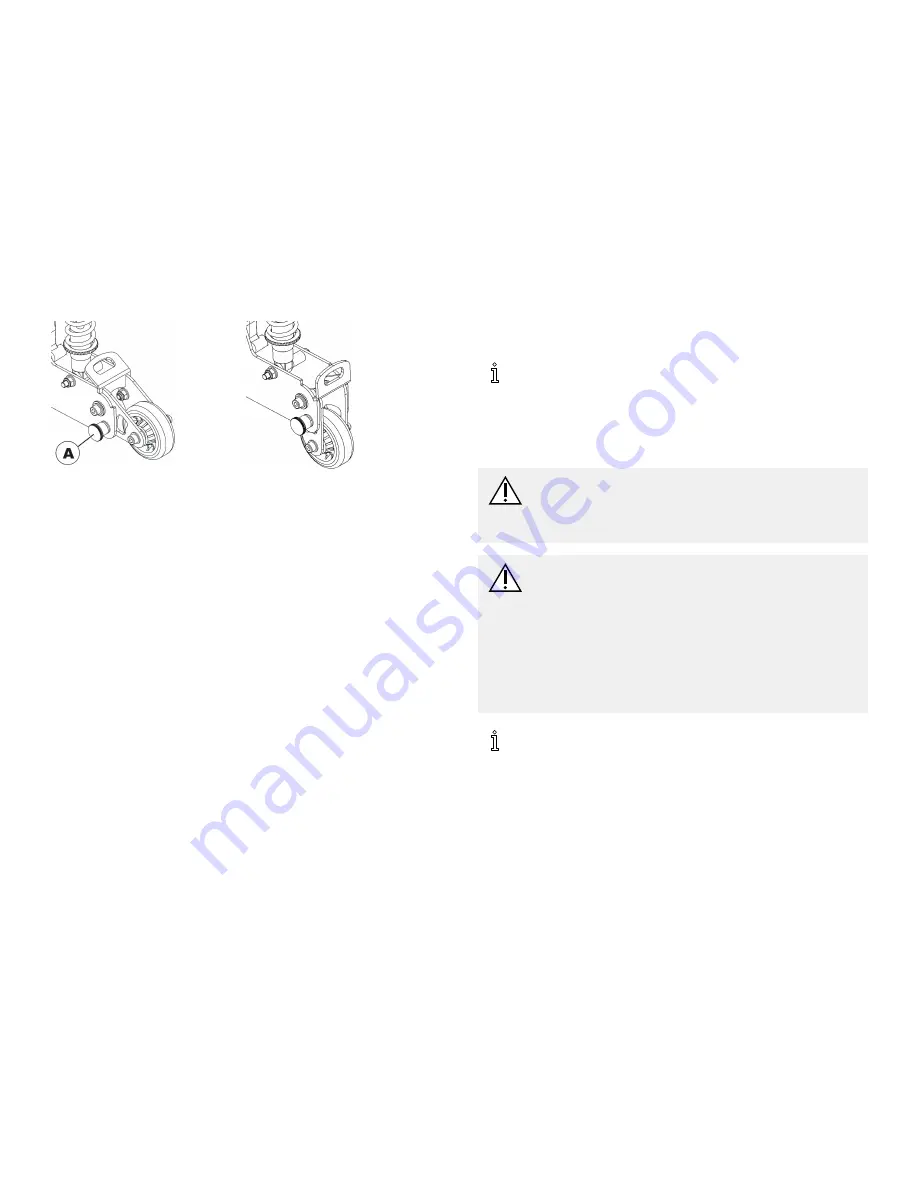
Usage
Driving position
Parking position
Folding the antitipper down:
1.
Pull out the locking pin
A
to release the antitipper.
2.
Fold the antitipper down.
The mobility device is now shorter.
Folding the antitipper up:
1.
Fold the antitipper upwards until the locking pin audibly engages.
The antitipper is functional again.
6.8
Use on public roads
If you wish to use your mobility device on public roads and lighting is
required by national legislation, then your mobility device needs to
be fitted with an appropriate lighting system.
Contact your Invacare dealer if you have any questions.
6.9
Pushing the mobility device in freewheel
mode
The motors of the mobility device are equipped with automatic
brakes, preventing that the mobility device starts rolling out of
control when the remote is switched off. When pushing the mobility
device manually whilst freewheeling, the magnetic brakes must be
disengaged.
Pushing the mobility device by hand may require more
physical force than expected (more than 100 N). The
necessary force nevertheless complies with the requirements
of ISO 7176-14.
6.9.1
Disengaging motors (conventional motors)
CAUTION!
Risk of injury from hot motor surfaces
–
Avoid touching the motor surfaces when engaging or
disengaging.
CAUTION!
Risk of the mobility device running away
–
When the motors are disengaged (for push operation
whilst freewheeling), the electromagnetic motor
brakes are deactivated. When the mobility device is
parked, the levers for engaging and disengaging the
motors must without fail be locked firmly into the
"DRIVE" position (electromagnetic motor brakes
activated).
The motors may only be disengaged by an attendant, not
by the user.
This ensures that the motors are only disengaged if an
attendant is available to secure the wheelchair and prevent
unintended rolling.
Each motor is fitted with an engaging turn knob which is used to
engage or disengage the motor.
1529686-R
77
Summary of Contents for Storm4 True Track Plus
Page 109: ...Notes...
















































